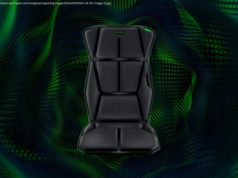Weak Wi-Fi signals slowing you down? While it isn’t ideal, it’s not impossible to fix. Here’s our top tips (and gadgets) to help improve Wi-Fi connectivity at home.
All of us know a house’s weak or dead Wi-Fi spots, and it’s frustrating when these are where you need a strong Wi-Fi signal most. Wi-Fi black spots are most often caused by distance from the wireless router (wireless signals weaken with range) , thick stone walls, and interference.
If the Wi-Fi in your house is pretty flaky you might want to consider a Wi-Fi range extender to push your signal that extra bit further. Alternatively, you can add Powerline adapters that use your home’s electrical wiring to create a speedy home network with added new Wi-Fi hotspots; and a new system called Mesh promises house-wide Wi-Fi enhancement.
Here’s some tips and tricks and inexpensive gadgets that will help improve your wireless signal.
If your house suffers from weak Wi-Fi, the first step to consider is upgrading your wireless router.
The oldest to newest Wi-Fi standard are: 802.11b, 802.11g, 802.11n, and 802.11ac. If you have an older wireless “b” or “g” router you should consider replacing it with a newer wireless “n” or “ac” device that offers longer ranges and faster connection speeds.
Why not be cheeky and ask your ISP to send you an updated wireless router? If you’ve been a customer for a while it should help you out, but watch out if it asks you to sign up for a longer term, unless you’re happy with its service.
Though these newer routers may not significantly increase the range of your wireless network, you should at least get better speeds at longer distances. Check out the best wireless routers in our round up.
You wont get the maximum range and performance from the newer wireless router unless your computers, smartphone or tablets also use the same Wi-Fi standard. An old laptop is unlikely to boast “ac” or “n” Wi-Fi. Check the specs to see which wireless standard it is using.
Rather than buy a new laptop or desktop PC or Mac you can buy a wireless adapter – from as little as £25 – that plugs into a USB port. You can also add a new wireless adapter inside a desktop PC’s case or via a PC Card slot, but good luck trying that with a Mac! Check out our round up of the Best 802.11ac USB Wi-Fi adaptors .
What about your smartphone’s wireless? Apple’s iPhone 6 and Samsung Galaxy S4 and later, for example, are equipped up to 802.11 ac (and backwards compatible with all the older standards) , while older variants like the iPhone 4 and 5, Galaxy S, S2 and S3 are only compatible up to 802.11 n.
We also recommend considering Powerline adapters that create a fast home network using the electrical wiring in your house. This means you can take your internet around your house without losing much performance. Creating a Powerline home network is as easy as plugging in to a power socket.
Simply plug one adapter into a power socket near your router and connect it to the router using an Ethernet cable (usually supplied with the adapter) .
Then plug the second adapter into a power socket in a far-away room. You can then attach this to your smart TV, Sky+ box, games console, laptop, etc, via another Ethernet cable.
This means that you can do without Wi-Fi for more demanding tasks such as streaming HD TV shows or moves from catch-up TV services such as BBC iPlayer, 4oD and Sky.
Powerline adapters act as if they’re directly plugged into your router – even if they’re on the other side of the house. You need at least two adapters, and the best way to buy these are as part of a starter kit.
The best Powerline adapters can also create a new Wi-Fi hotspot right there in the second (or third or fourth) room. These create not merely boosted signals – like you get with a Wi-Fi extender – but close-to-fully performing new Wi-Fi hotspots. They cost more but are much more versatile and provide faster speeds than mere extenders.
Read our Powerline Explained feature and Best Powerline Adapters round up.
A mesh network is two or more routers that work together to provide much wider Wi-Fi coverage in a building than a single router can ever do. It replaces your existing router’s Wi-Fi, and is pretty simple to set up.
You attach one of the units from a mesh Wi-Fi kit to a spare network port on your router, and it creates a new Wi-Fi network to which all your Wi-Fi-hungry gadgets connect.
Then you place the second (and third if required) mesh device somewhere else in your house – usually on another floor. The devices all talk to each other and create a single super Wi-Fi network that’s both strong and fast across your entire home.
Read our Best Mesh Wi-Fi Network Kit round up .
A new wireless router or Powerline Adapter with built-in wireless are the two best options, but can cost more than a simple Wi-Fi Extender. The best Powerlines, with wireless functionality, we tested cost from around £50 to £150. Wi-Fi extenders such as TP-Link’s TL-WA860RE or AC750 are priced around £20. Read: TP-Link Wireless Extender review.
Wi-Fi extenders catch a wireless signal and then rebroadcast it, helping to strengthen the signal from a router on a different floor of a house or on the opposite side of a building. It should be noted that they can also drag down your network’s performance.
A repeater uses half its internal antennae to receive a wireless signal and the other half to transmit a new signal – effectively halving the potential speed of the device’s network connection.
This shouldn’ t be that noticeable for light web browsing, email, etc, but can be felt when streaming video or moving files around the network. That’s why we prefer Powerline for the more demanding tasks.
Wi-Fi extenders share the bandwidth with the router. Wi-Fi speeds are slower because it’s sharing the data between the router and the extender, whereas the Powerline simply acts as a single device (not sharing the bandwidth) and so you get stronger signals.
The Wi-Fi extender needs to be placed in a central location, not too far away from the main router. If you put the repeater at the far edge of your main network hoping to strengthen the signal you will reduce the speed of your connection to the rest of the network and to the internet.
Remember that the extender is just boosting the signal. If it’s placed in a weak-Wi-Fi spot then it will merely push around that weak signal. Place it in an area with better Wi-Fi and the signal it pushes out will be stronger, too.
The ideal location for a range extender is half way between your main router and the intended wireless devices – in an open corridor or spacious room rather than a crowded space. It should be away from interfering devices such as cordless phones, Bluetooth gadgets and microwave ovens.






